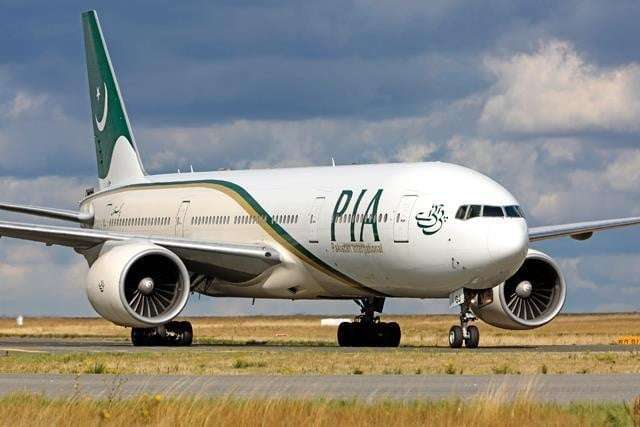LAHORE: In an urgent response to the severe smog choking Lahore’s skyline, the Punjab Environmental Department has implemented a “green lockdown” in several high-smog areas of the city. This comes as the provincial government unveils plans to collaborate with Indian Punjab to tackle the growing environmental crisis.
As Lahore’s air quality plummets to alarming levels, ranking it among the most polluted cities in the world, these measures have become critical.
Critical Air Quality Levels
Recent data from air quality monitoring systems across Lahore reveals that the city’s smog has reached dangerous levels. Real-time measurements indicate that Lahore is currently one of the top three most polluted cities globally, alongside Beijing and Delhi, with an average Air Quality Index (AQI) of 168—classified as “unhealthy.”
Global air quality monitoring agency IQAir corroborates this alarming trend, reporting PM2.5 concentrations soaring to 79.6 micrograms per cubic meter—nearly 16 times the World Health Organization’s (WHO) recommended annual limit. PM2.5 particles are fine particulate matter smaller than 2.5 micrometers in diameter, capable of penetrating deep into the lungs and entering the bloodstream, posing significant health risks, particularly for vulnerable populations, including children and the elderly.
Implementation of ‘Green Lockdown’
In response to the critical air quality, the Punjab Environmental Department has enforced a “green lockdown” in specific smog hotspots. Starting Wednesday, areas identified as severely polluted—such as Davis Road, Egerton Road, Durand Road, and Kashmir Road—will face restrictions.
These measures prohibit construction activities, ban the use of commercial generators, halt motorcycle rickshaw operations, and restrict open-air barbecue activities after 8 p.m. The goal is to reduce emissions from significant pollution sources as the winter smog season approaches.
A Call for Climate Diplomacy
Punjab Chief Minister Maryam Nawaz emphasized the need for “climate diplomacy” with India, particularly with Indian Punjab, to collaboratively tackle the escalating air pollution. She stressed that pollution knows no borders, making cross-border cooperation essential for effective smog control.
“I am considering writing a letter to the chief minister of Indian Punjab. This is not just a political issue, but a humanitarian one,” she stated, highlighting the importance of diplomatic efforts in fostering collaborative policies for pollution reduction.
Nawaz also urged parallel initiatives from the Indian side to mitigate cross-border smog, particularly as regional weather conditions are expected to worsen the pollution problem in the upcoming months.
Maryam to Engage Delhi’s Chief Minister
Punjab Senior Minister Marriyum Aurangzeb presented the government’s initiatives against smog during a special session of the Punjab Assembly. She reported that CM Maryam intends to initiate “Air Quality Index diplomacy” by writing to Delhi’s chief minister, seeking engagement from the Indian government on shared air quality concerns.
Aurangzeb noted a significant increase in hospital admissions—up 34-35% over the past three months—due to smog-related illnesses, emphasizing that Lahore’s green cover is currently only at 3.3%, well below the necessary 36%. She mentioned that clean air initiatives have been included in the 26th Amendment, requiring 1% of greenery allocation in each project’s PC-1 in Punjab.
The government is closely monitoring crop residue burning, which contributes to smog, attributing 39% of the pollution to the construction and transport sectors, 15-20% to agriculture, and 5% to factories. Additionally, a new vehicle fitness system has been launched in Punjab, imposing strict penalties on vehicles failing inspection after three violations.
Aurangzeb highlighted the inspection of over 45,000 brick kilns, with 6,500 demolished and others transitioning to cleaner zigzag technology as part of a zero-tolerance policy against polluters. The government has also banned plastic bags and imposed regulations on construction vehicles entering Lahore. She announced that artificial rain technology has been acquired for future use.
Health Risks from PM2.5 Pollution
PM2.5 pollution remains a critical concern in Lahore, posing severe health risks due to its microscopic size. These particles, less than 2.5 micrometers in diameter, can evade the body’s natural defenses, penetrating deep into the lungs and entering the bloodstream. Long-term exposure to PM2.5 has been linked to serious health issues, including premature death from heart and lung diseases, as well as exacerbated asthma and other respiratory complications.
As Lahore grapples with this air quality crisis, residents are advised to limit outdoor activities, use air purifiers, and wear masks to minimize exposure to harmful pollutants. The Punjab Environmental Department will continue to monitor air quality and adjust lockdown measures as necessary to safeguard public health.



